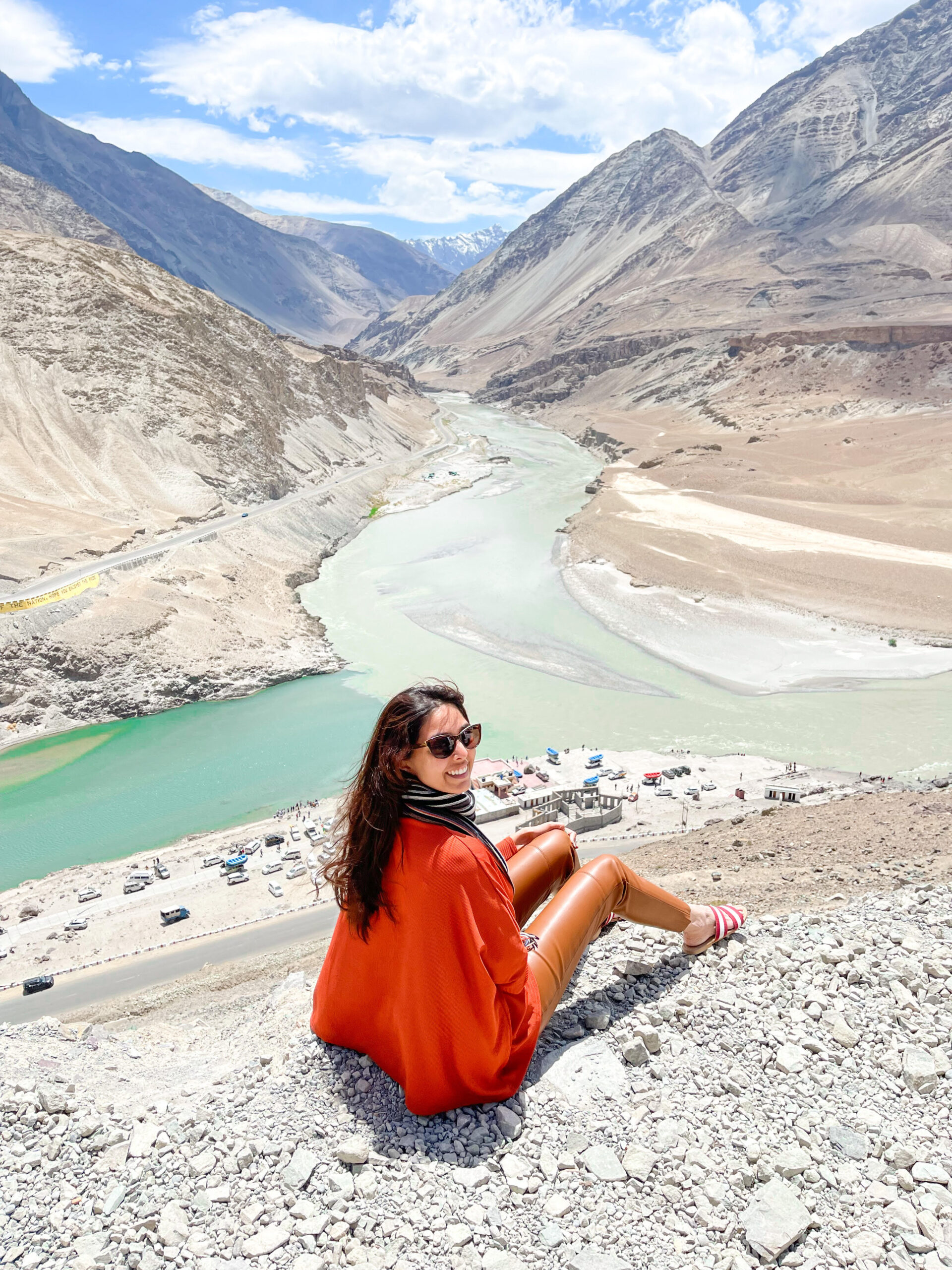Located in the state of Jammu and Kashmir, the humble land of Ladakh in India is cradled by the ice-capped Kunlun Mountain range in the north and the Great Himalayas to the south, providing a breath-taking panoramic view all around. The beauty of the place cannot be expressed in words. Visiting Leh Ladakh can be a great experience as these places have a bounty of natural beauty. After a long period of Ladakh tourism restrictions, the place has finally provided some travel relaxation to the wanderers.

Ladakh is a no plastic zone, which means no plastic bags. Ladakhis are gentle folks and would be happy to smile for your camera.We visited Ladakh post-covid.
Weather:
Ladakh, also known as the Roof of the World or the land of High Passes is located in the trans-Himalayan region that comprises the Karakoram, Ladakh, Pangong and Zanskar range and the Tibetan plateau.
Essentially a cold desert it lies in the rain shadow of the Himalayas. The general altitude of the landscape ranges from 2900m to 5900m.
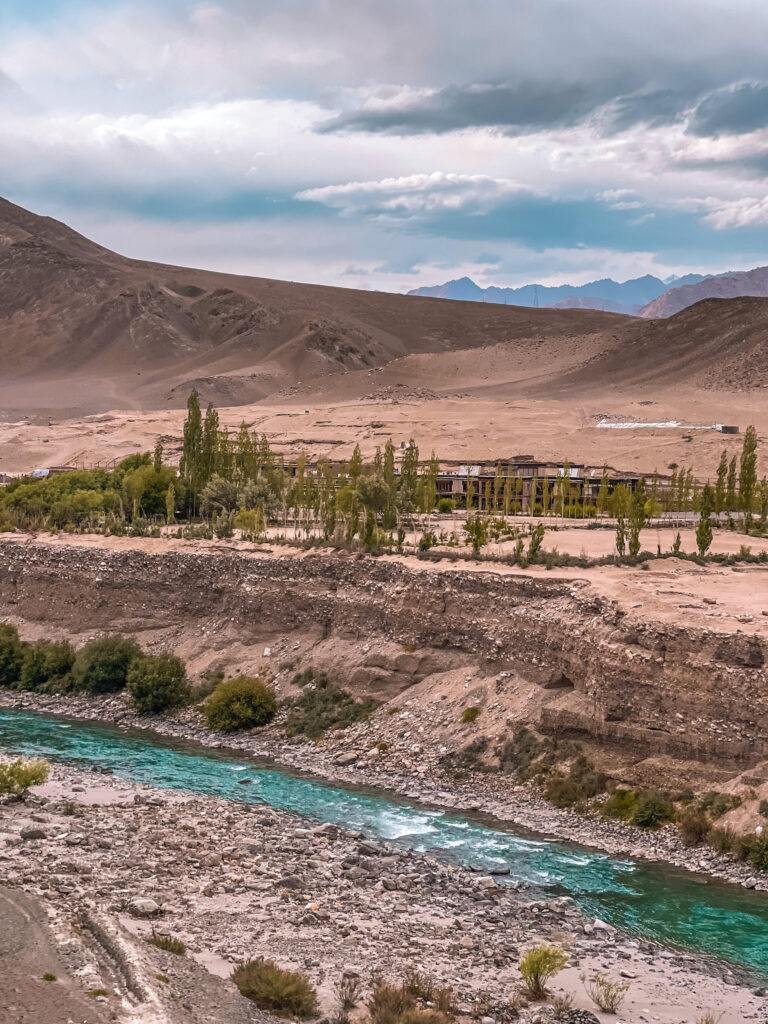
The snow starts to thaw in mid-May there continues to be a certain amount of nippiness in the breeze. The sun shines brightly during the day with the temperature reaching up to 16°C and night time temperature remains in the range of 5°C.
DAY 1
We arrived at Leh on Day 1. The first 24 hours we took complete rest (with minimal slow walking), consumed lots of water and slept early at night. Guests are requested to carry a sufficient amount of cash as the ATMs in Leh can be unreliable. Pre-paid mobile numbers do not work in Jammu & Kashmir. For Leh/Ladakh only Airtel and BSNL post-paid connectivity works best.
Indigo Airlines transferred us to The Grand Dragon Ladakh (TGDL). Leh is at 3500m and the flight up from the plains means that you have to acclimatize gently without pushing yourself. The days scheduled in Leh are the minimum required for acclimatization.
We then checked in and have your lunch. Rest is a must all day. It is vital that the first night is passed without too much discomfort as that means the body is slowly getting ready for the landscape.
You might feel altitude sickness. The symptoms usually involve headache and breathlessness. If these are experienced, oxygen levels and BP need to immediately checked by a doctor or your trained tour leader and oxygen needs to be administered immediately.
DAY 2
Day 2 can involve a minimum amount of walking but for those who experienced symptoms like a headache, breathlessness etc. on day 1, day 2 will be another day of complete rest.
After breakfast, we experienced the beautiful property of The Grand Dragon Ladakh. The Grand Dragon Ladakh, one of the first 5 star luxury hotels in Ladakh, is owned and operated by the Abdu family from Leh, who have more than 40 years of experience welcoming visitors to the beautiful region.
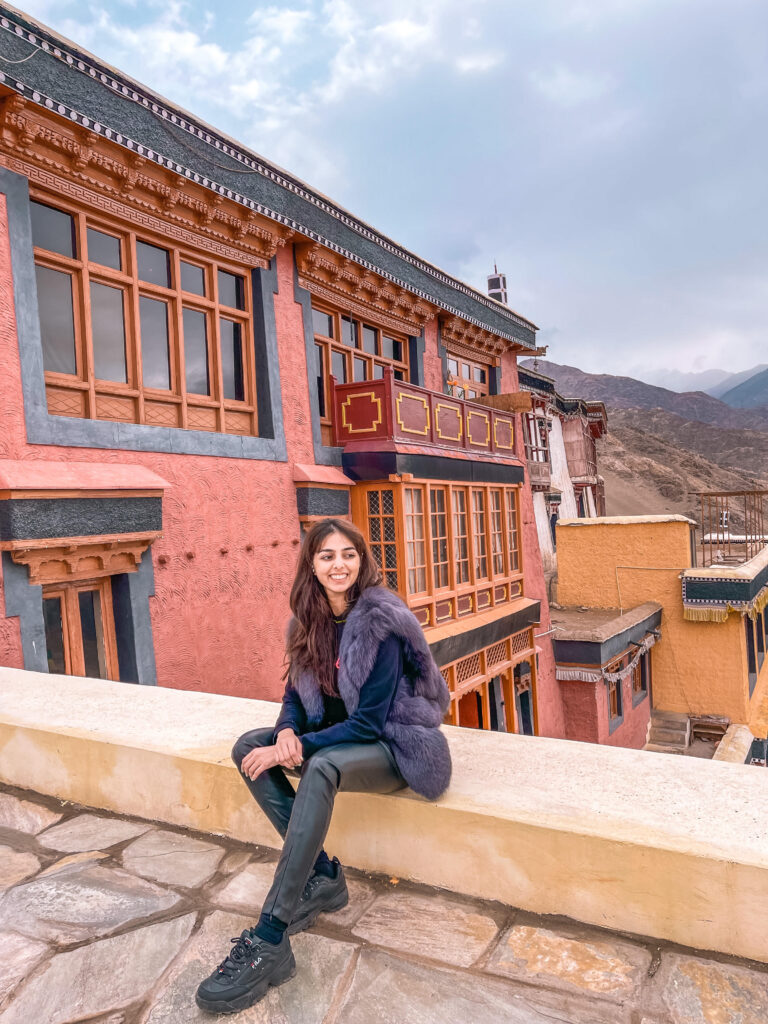
The Grand Dragon Ladakh has more than 70 rooms which are operational for the all 12 months of the year. Central heating system, fast wifi, running water and many small gestures come as a part of unified service of the Grand Dragon. The Grand Dragon Hotel also boasts of a lounge, a library with plenty of books, a children’s room, a gym, a sauna and an indoor games room.
They offer a fine dining experience at their restaurant. There is not one but several options to relish tasty and freshly prepared dishes at the Ladakh Grand Dragon Hotel. In addition to this, one can also avail of BBQ facilities with bonfire in the garden. A meal at any of these restaurants overlooking the garden and mountains will make you feel in heaven. You can also have your breakfast or brunch by the Indus River..
In the evening we visited Leh Market and Hemis National Park. Hemis National Park is very famous for its snow leopard tours in winter. On your way to the Park, you might spot the famous Secmol Campus that was started by Sonam Wangchuk, the real ‘Rancho’ (Aamir Khan’s character from 3 Idiots). We loved the drive to Hemis National Park but keep in mind it is a high altitude park so keep hydrating yourself.
We then visited the Leh Market, one of the busiest, most colourful places in Leh, where you can get everything imaginable- from groceries to clothes, jewellery to local street food. … The market is divided by small lanes and bylanes, with sections dedicated to things such as handicrafts, spices, clothes, artefacts, food and souvenirs. You can visit Brazil Café Leh for some coffee and freshly baked bread. Don’t miss the stuffed Ladakhi Bread, Momos and Thukpa. We absolutely loved it. Back to the hotel and sleep well.
DAY 3
We attended the early morning prayers at Thiksey monastery. Make sure you reach by 6am. This monastery houses several stupas, statues and Buddhist artefacts in their 12 storey structure. Apart from being the largest monastery of Central Ladakh, the monastery is also famous for its 49 ft tall statue of Maitreya Buddha in the lotus position, covering two floors of the monastery.

Next, we enjoyed a picnic breakfast by the Indus River with an adorable picnic basket packed by TGDL. It is very windy so please don’t forget to carry your earmuffs.
Next, we visited the world’s longest zipline at the highest altitude and if available go Ziplining on the world’s highest set up.
Don’t forget to visit Shanti Stupa which stands peacefully and beautifully on a hilltop in a place called Changspa in Leh.
You can also visit the Secmol Campus. This non-conventional school is like an eco-village.
In the evening learn the art of calligraphy at The Grand Dragon.
We then enjoyed a curated VEG Ladakhi meal.
DAY 4
We then visited Nubra Valley via Khardung a Pass which is one of the Highest Motorable Roads in the World (18,380 ft). So, keep hydrating yourself and enjoy the unreal drive! The level of oxygen on K Top is very less and it is advised not to stop there for more than 20 minutes. On our way the snow was a lovely surprise which we weren’t expecting it.
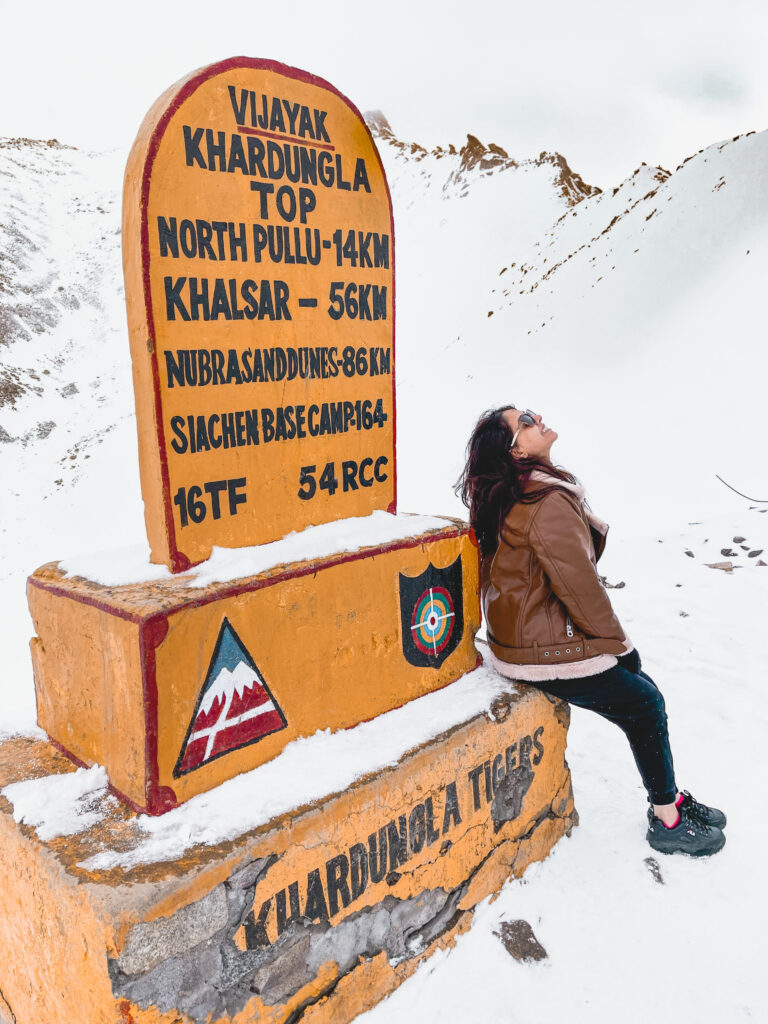
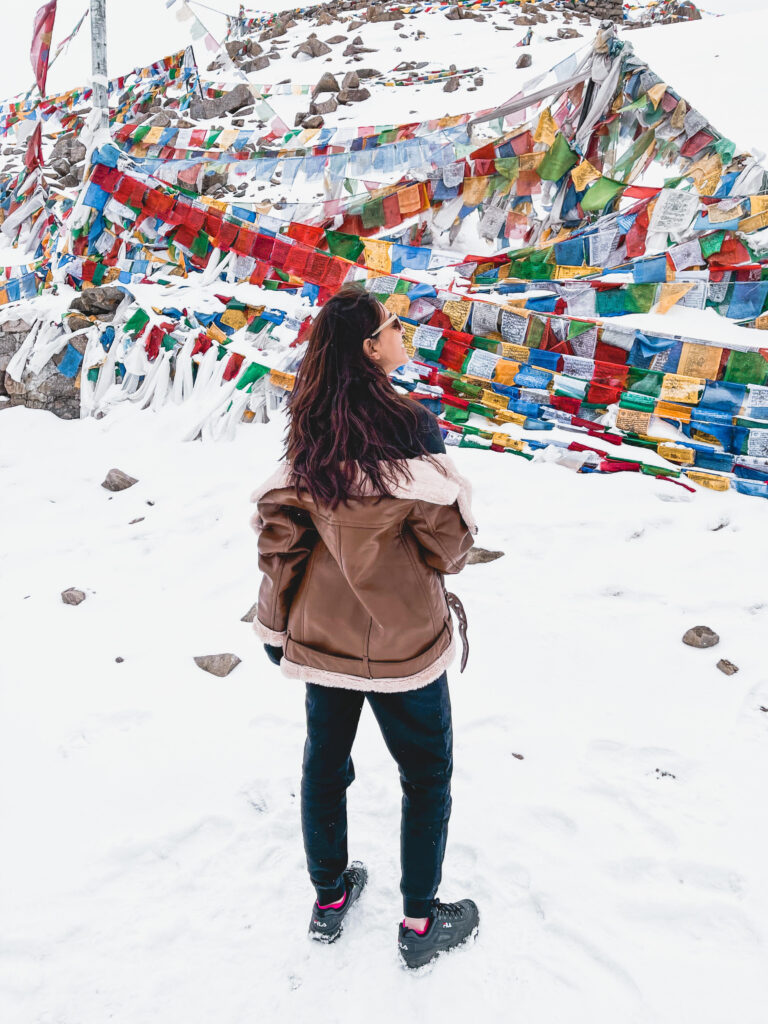
We departed after early breakfast so that we reach the hotel by 2 pm latest. After reaching the hotel we checked-in and spent the rest of the evening at Hundar Village, enjoying a camel Safari in Sand Dunes between Diskit and Hunder Village.
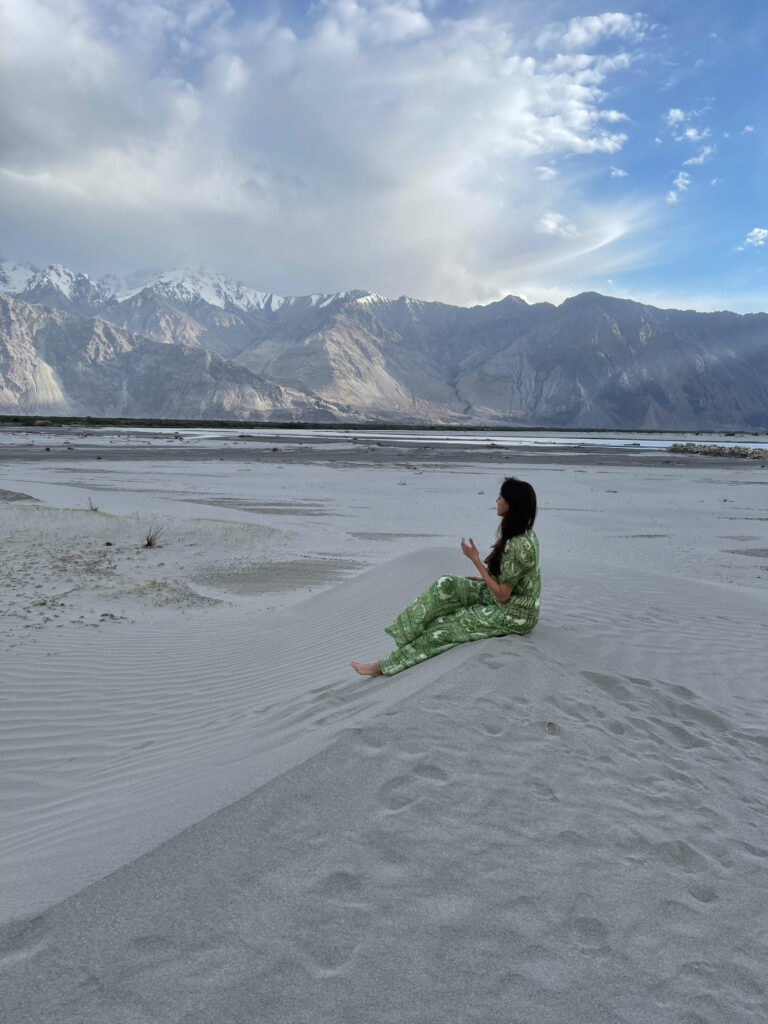
We stayed at Nubra valley stay – lchang nang retreat. Lchang Nang is a destination created for travellers in search of peace and tranquility. Combining comfort and simplicity, it pays homage to its local heritage via its links to the local community and the local culture. There are 17 individual cottages, created in the local architectural style using mud, stone and poplar, are accessed through a footpath. Each cottage connects to a private garden and outdoor terrace. They arrange high tea near the mountains and wine and cheese in the sand dunes. Their experiences are very unique. The café provides fuel for a day’s adventure in a full breakfast spread, with local favourites served at lunch and dinner.

After the long drive from Leh we were asked to meet for a picnic which was no less than a heaven. A private high tea set up with the most gorgeous view of the mountains. In the evening they also arranged a private bonfire for us which was amazing!
[Dinner and overnight at Hotel in Nubra Valley]
DAY 5
Nubra – Turtuk (80 kms)
After breakfast, we drove to Turtuk. Turtuk is a must-visit place when in Ladakh. Because no other place can teach an appreciation of stillness in time and the beauty of living as humans not defined by borders.
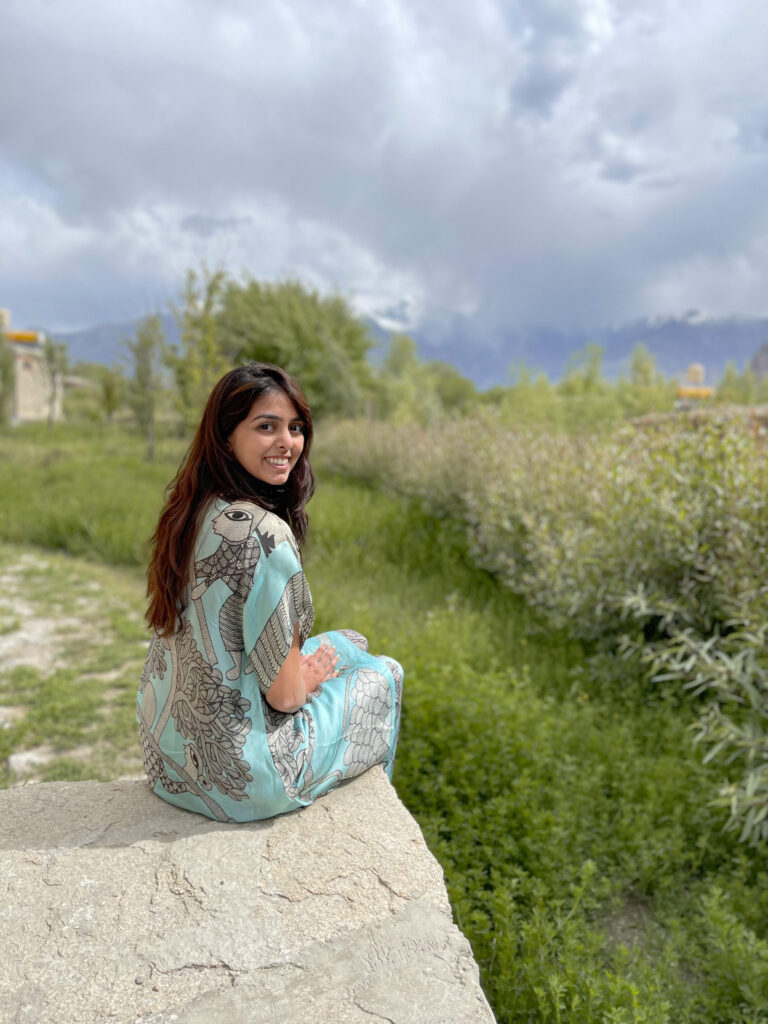
We explored the Turtuk and interacted with the Balti community.
Enroute visit Tyakshi, a village located on the banks of the Shyok River (it is the border which divides India and Pakistan).
[Return to the hotel in Nubra Valley for the night].
DAY 6
Nubra – Pangong via Shayok 5/6 hours (160 km)
After breakfast, we visited Diskit, the oldest and the largest Buddhist Monastery in all of Nubra Valley, standing tall at an altitude of 10,300 ft in the cold desert of Ladakh. From there we departed for Pangong, a brackish water lake shared by India and China. You will be reaching Pangong Tso via Changla Pass where temperature will be in the range of min -8 to max 1 degree centigrade.


Overnight we stayed at Nature’s Nest Camp. Nature’s nest camp is located in on the bank of Pangong Lake in Spangmik, the farthest point to which foreigners are permitted, is only some seven km along the southern shore from the head of the lake, but it affords spectacular views of the mountains of the Changchenmo range to the north, their reflections shimmering in the ever-changing blues and greens of the lake’s brackish waters.
DAY 7
Pangong – Leh 6/8 hours (220) km
At noon we departed for Leh via Changla Pass from Pangong – natures nest camp. Overnight stay at The Grand Dragon.
DAY 8
Day trip to Sham Valley
After breakfast, we drove to Sangam (Confluence of Zanskar & Indus Rivers) followed by rides on ATV’s near Magnetic Hill. As you move ahead from Magnetic Hill in Sham Valley, just before Nimmu Village, there comes a famous confluence of two rivers, Indus River coming from Tibet (left) and Zanskar River coming from Zanskar Valley (right). Zanskar River is known for its famous Chadar Trek.
Chadar Trek is done in peak winters when the Zanskar river freezes and people trek over it to reach Padum Village in Zanskar Valley from Leh because of heavy snowfall. We spent some time and relaxed along the two rivers in the tourist spot that authorities have created along the shores of the confluence.
The Zanskar, which offers some of the best white water for rafting in India, runs through one of the most remote and isolated regions. Enjoy water rafting for ¾ hours on the Zanskar river. We loved it and the view was gorgeous. It was followed by a picnic and TGDL took care of our packed lunch. Drive down to the Magnetic Hill before heading back to the hotel by evening.
We returned back to The Grand Dragon Ladakh and spent the last night there.
Day 9
Departure:
Before departure do not forget to do a Negative RT PCR test. Speak to your hotel concierge and book a slot that’s 48 hours before your departure.
Also, the day the guests are leaving, the Leh airport authorities allow clothing only in the check in bags. Camera equipment INCLUDING BATTERIES and laptops need to be packed in the hand luggage only. This is something they check seriously and often guests are made to repack if their arrangement is not in accordance with the above system. On departure from Leh, guests are required to identify their check in luggage once they clear security or else the baggage will not be loaded on to the flight.
